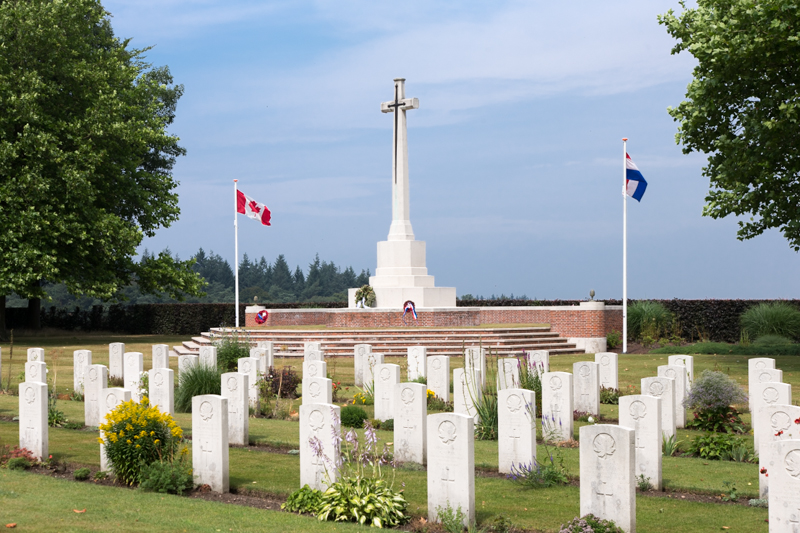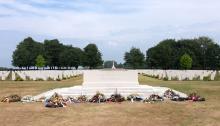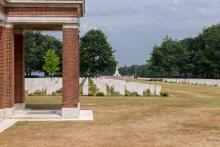Gelderland
Groesbeek is located 10 kilometres south east of the town of Nijmegen and close to the German frontier. Groesbeek Canadian War Cemetery is 3 kilometres north of the village and 1.5 kilometre east of the main road to Nijmegen.
On leaving the A73 motorway at the junction Overasselt-Mook-Groesbeek, follow directions to Mook. Follow direction signs towards Mook War Cemetery. After passing Mook War Cemetery continue to the village of Groesbeek to a roundabout. Turn left at the roundabout onto Dorpstraat passing through Groesbeek. The road name then changes to Molenweg. A Commission direction sign indicates the right hand turning from Molenweg onto the Zeven Heuvelenweg. 1 kilometre after entering this road lies the cemetery on the right hand side of the road.
Allied forces entered the Netherlands on 12 September 1944. Airborne operations later that month established a bridgehead at Nijmegen and in the following months, coastal areas and ports were cleared and secured, but it was not until the German initiated offensive in the Ardennes had been repulsed that the drive into Germany could begin.
Most of those buried in GROESBEEK CANADIAN WAR CEMETERY were Canadians, many of whom died in the Battle of the Rhineland, when the 2nd and 3rd Canadian Infantry Divisions and the 4th Canadian Armoured Division took part in the drive southwards from Nijmegen to clear the territory between the Maas and the Rhine in February and March 1945. Others buried here died earlier or later in the southern part of the Netherlands and in the Rhineland.
The cemetery contains 2,610 Commonwealth burials of the Second World War, and nine war graves of other nationalities.
Within the cemetery stands the GROESBEEK MEMORIAL, which commemorates by name more than 1,000 members of the Commonwealth land forces who died during the campaign in north-west Europe between the time of crossing the Seine at the end of August 1944 and the end of the war in Europe, and whose graves are not know.





Add new comment